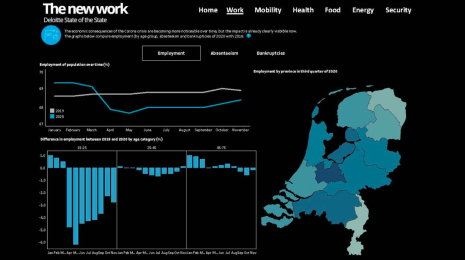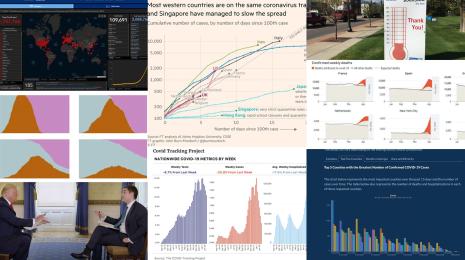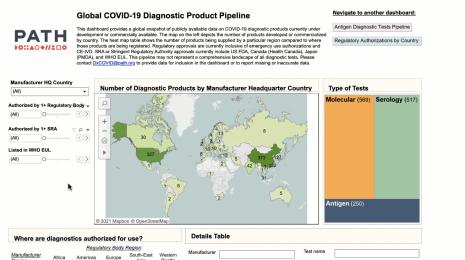How vulnerable are health care systems in rural recreation communities?

Headwaters Economics is an independent, nonprofit research group that works to improve community development and land management decisions from rural counties to large metropolitan cities across the United States. Since 2015 Headwaters Economics has been a Tableau Foundation partner, and we are proud to support the work of its researchers exploring the intersection of conservation and community development.
We are republishing an excerpt of this article which first appeared on April 14, 2020 on the Headwaters Economics website to help bring attention to some of the less visible—but no less important—impacts of the public response to the COVID-19 outbreak. For more on the organization’s policy suggestions, check out the full article on headwaterseconomics.org.
In mid-March, the outlines of the risks from COVID-19—uncertain just days earlier—became starkly clear as thousands of tourists descended on the recreation hub that is Moab, Utah. The community has only three critical care beds and visitors were flocking from metro areas and Colorado resorts where clusters of infections had already appeared. The county health department pleaded with the city and county to close hotels and campgrounds and ask people to go home. The order to evacuate campgrounds and close hotels was delivered March 17.
Moab’s concern is justified: rural recreation counties experienced rates of infection four times higher than other rural counties early in the spread of the virus. Colorado’s cases rose first in mountain resorts where tourists converge from across the globe and wealthy urbanites sought refuge in second homes and vacation rentals. It is not a surprise that other recreation hubs such as Bozeman, Montana, and Sun Valley, Idaho—with busy airports, ski areas, and access to public lands—are the epicenters of COVID-19 cases in western states.
Stresses on rural health care are compounded for communities that rely on public hospitals
Rural recreation counties are not only more exposed to risks of spread early in the pandemic, they are also less able to respond for a variety of reasons. Even before the global pandemic, many rural hospitals were already stretched thin, providing care to aging populations, victims of the opioid crisis, and families struggling from rural economic transitions. Rural hospital closures accelerated in the last decade and continue today.
Across rural areas, hospitals are organized as for-profit, nonprofit, or public entities. Public entities include hospitals and health care districts that are owned by counties and local health districts, meaning they depend upon general tax revenue as part of their funding. Private and nonprofit hospitals do not. Public hospitals, therefore, are challenged by volatile local revenue—particularly in rural recreation communities hardest hit by social distancing policy and travel restrictions—and limitations placed on the ability of local governments to grow their budgets and save for emergencies.
In the United States, 483 counties (15%) have only public, locally funded hospitals. Nearly a third of rural counties with hospitals rely entirely on public hospitals funded by local governments. (This number is 53% in rural recreation counties in the West.) Local health services are often delivered by local governments in rural communities where low patient volume makes a for-profit model cost-prohibitive. Public hospitals and health districts are a critical component of the U.S. health care system. They are the front line and in many rural counties the only critical care and public health provider.
The authority of locally funded public hospitals and health districts to levy taxes is limited. Like all local governments, they are limited by state-imposed restrictions on the ability of local governments to generate revenue, on what they are allowed to spend revenues on, and on saving for the future. These limitations are the result of anti-tax sentiments. In general, local governments cannot deficit-spend, cannot save funds for downturns or emergencies, and their tax revenue is exposed to volatility, particularly in communities dependent on tourism-related revenue.
To see the data visualized and read about strategies that Headwaters is proposing to solve for this situation, visit their blog.







